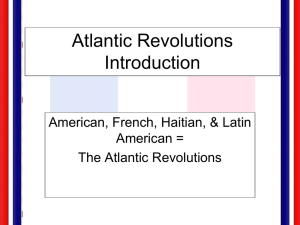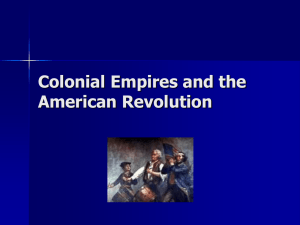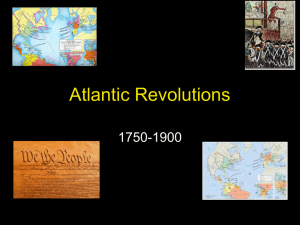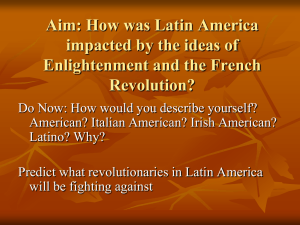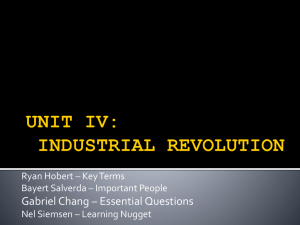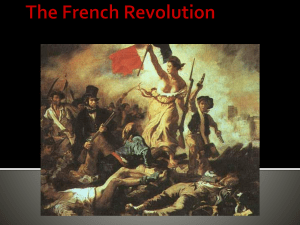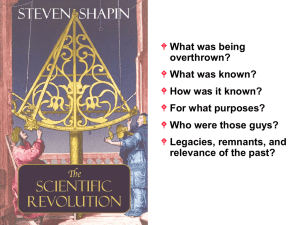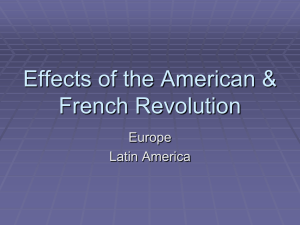Atlantic Revolutions - Spokane Public Schools
advertisement
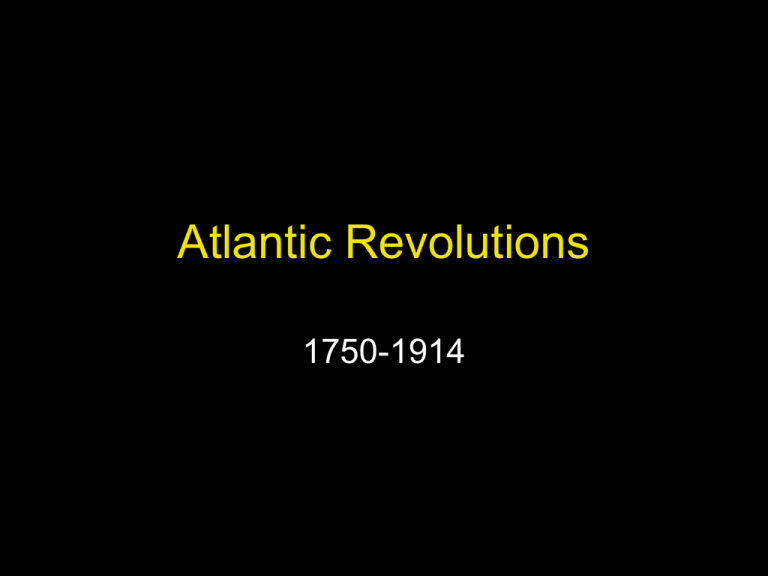
Atlantic Revolutions 1750-1914 The Promise of the Enlightenment Contract government (John Locke) • A political theory that views government as stemming from the people, who agree to surrender some personal freedom in return for a government that guarantees protection of citizens’ rights and property. Laissez faire (Adam Smith) • An economic theory that advocates freeing economies from government intervention and control. The Promise of the Enlightenment Salons • were places where people discussed the ideas of the Enlightenment, published in the Encyclopedia (1751-1772) Atlantic Revolutions The North The French Haitian American Revolution Revolution Revolution 1789–1815 1791-1804 1775–1787 Latin American Revolutions 1810-1825 Popular sovereignty authority to govern comes from the people, not from God or tradition. North American Revolution 1775-1787 • A conservative political movement aimed to preserve colonial liberties, rather than gain new ones. • Colonists regarded autonomy as their birthright. • Colonial society was more egalitarian than Europe or Latin America. • Revolted against “taxation without representation.” North American Revolution 1775-1787 • U.S. Constitution was one of the first documents that put the ideas of the Enlightenment into practice. French Revolution 1789-1815 • French government was bankrupt • Unlike the American Revolution, it was driven by social conflicts based on the unfairness of the Old Regime • Effort to create a new society during the Reign of Terror. • Napoleon Bonaparte spread the ideals of the revolution through conquest. Legacy of the French Revolution: Birth of -isms Nationalism Liberalism Conservatism Romanticism Create a nation-state unified under the rule of law. Create centralized nationstates ruled under a constitution Maintain the status-quo, tradition, continuity and monarchies. Glorified nature, emotion, and the imagination in art and philosophy. Nationalism Liberalism and Romanticism Conservatism: Prince Klemens von Metternich Conservatism is a political philosophy which embodies a desire to prevent change. 19th Century conservatives believed in the power behind absolute monarchy, the aristocracy and the Church. The conservatives of Europe succeeded in creating an era between 1815 and 1914 without war. They did so through repression of dissension and thought. Haitian Revolution, 1791-1804 • Santo Domingue was a French Caribbean colony. • Regarded as the richest colony in the world. • Majority of the population were slaves. • Solidarity and suffering made it ripe for revolution. Haitian Revolution, 1791-1804 • French Revolution inspired revolts and demand for political equality. • In1793, a proclamation granted slaves freedom. • In 1794, the French revolutionary government declared blacks had rights equal to whites. • This created wide-spread rebellions across the Caribbean and Latin America. Haitian Revolution, 1791-1804 • Toussaint L’Overture possessed strong military skills and became the leader in the Haitian Revolution. • Although he modeled French ideals of freedom and citizenship, he reenslaved many Haitians. Latin American Revolutions 1810–1825 Mexican Revolution 1810-1821 • Father Miguel Hidalgo opened a campaign against colonial rule in 1810 with the help from the popular classes, natives and creoles. • Augustin de Iturbide created a constitutional monarchy in 1821. Simon Bolivar “Liberator” • Took up arms, leading military campaigns , which along with popular uprisings, ousted Spain from much of Latin America. • 1830 created the Gran Colombia in northern South America. Brazilian Independence • Pedro I, son of Portugal’s king, declared Brazil independent in 1822 and made himself king. • More peaceful transition than the rest of Latin America with little change to the social structure. Latin American Revolutions • Creoles were offended by the Spanish monarchy’s efforts to control them in the eighteenth century. • Latin American independence movements were limited at first because there was little tradition of local self-government. • Society was authoritarian, with class divisions. Latin American Revolutions • Many leaders were liberals and their message appealed to the lower classes. • In reality, the indigenous people and slaves got little benefit from independence. • It was very difficult to unite various Spanish colonies, unlike the United States. • The United States grew more democratic and wealthy while Latin American countries grew more impoverished, undemocratic, and unstable. Global Impact • Inspired efforts to abolish slavery, give women greater rights, and extend franchise in many countries • Nationalism was shaped by revolutions • Principles of equality eventually gave rise to socialism and communism Reflection Questions • To what extent were revolutions the product of misery, injustice, and oppression? • To what extent did they reflect the growing weakness of established authorities, and the arrival of new ideas? • What was revolutionary about the Industrial Revolution? • What was common to the process of industrialization everywhere, and in what ways did that process vary from place to place? • What did humankind gain from the Industrial Revolution, and what did it lose? • In what ways might the Industrial Revolution be understood as a global rather than simply a European phenomenon?
